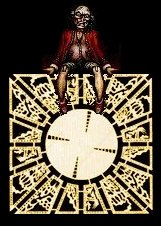DIVINE LIGHTS' APATHY
"In Purgatory's Shadow"
"Faust's Decision"
Written research by Mark Adams
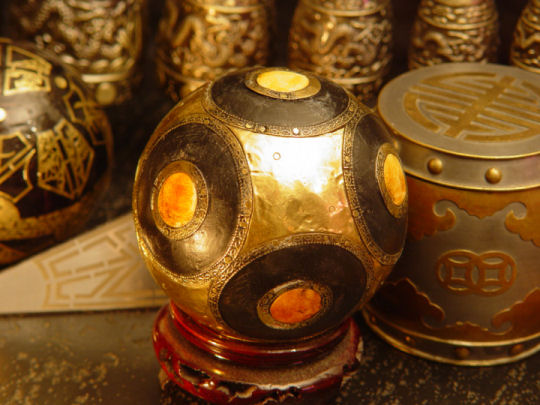
One of
LeMarchand's infamous orb
puzzles, The
Divine Lights' Apathy
was recorded as being constructed with wood, brass, leather and
bone.
A replica of the orb is seen here as part of a private LeMarchand
collection.
“And
this be hell, I’ll willingly be damn'd”
- Christopher Marlow, Doctor Faustus.
The Divine Lights’ Apathy
is one of the most
intriguing and mysterious of LeMarchand's devices. Created in
1799, at the dawn of a new century, it was said to have been completed
on the exact stroke of midnight welcoming in the year 1800.
Of
course many such rumours exist with no real way to verify them, but
evidence does exist to suggest that LeMarchand took particular care
over this piece.
“I
had known him to get
involved with the contraptions he created, but something was very
different about this model. He would not answer a summons, or
reply to
any of my many letters. After some time, I became worried
about his well being. I sent one of my butlers, Charles, to
his
home
in the hope of discovering whether or not he had met some ill
fate. Indeed, I
believe he may have. When Charles returned, it was with
terror
on his
face, ranting that he had seen Philip in communion with some ungodly
creature. I immediately dismissed his ramblings as nonsense,
but
was
intrigued as to what could have driven a man to see such
horrors.
However, what I saw when I reached his abode, I shall take to my grave.
Suffice to say, I headed back to England shortly after and
never
once
looked back.”
-
Sir Jack
Windsor, Memories
of the New World
,
published 1813 in the United Kingdom.
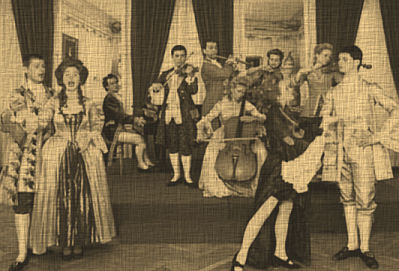
For
centuries, New Yorkers have been throwing New Year's Eve
parties.
The uneasy relationship between festivity and
debauchery has challenged
civic-minded New Yorkers to find safe and
organized ways to unleash the
city's spirit and contain its excesses.
Sir Jack Windsor’s account, however vague, does give us a
clue to
how important LeMarchand considered this piece. Though who or
what he
was seen with remains a mystery. The story given does match
with
another text found in the occult volume, “Heaven
and Hell:
Reality or Myth?” ,
which features texts and notes
from various unidentified scholars who claim to have seen these
realms. However, because of the dubious nature of the
material,
this
should not be taken as fact.
“My
brother has persuaded me to
put to paper an experience I had recently involving one Phillip
LeMarchand. Though I have little belief in these occult matters which
he is
interested, I write this as my official
statement.
I was present at a ball to celebrate the dawning of the new century. The party had began to slow when I noticed a gathering in the far corner of the room. Upon investigating, I found that a man by the name of Jacque had produced a small puzzle box, which he referred to as LeMarchand’s Box. What interested me more though was the fact that it's very creator was said to be at the party.”
(Section abridged)
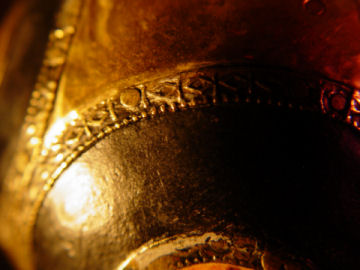
“I ventured through the upper landing in the hope of meeting this man who seemed to bring enchantment to so many. I heard a terrible cry from the room ahead. Instinctively I ran to help, only to find the door locked. However, I found I could see through the crack around the frame.
LeMarchand was there, and he appeared
to be arguing with someone. His face was filled
with
exhaustion, and he
was far from the elegant noble I had expected to see. What
else
struck
me was the unnatural blue light emanating from inside the
chamber.. At this point, I
realised I had stumbled upon something no man should ever witness.
'Finish it.'
It wasn't only these words that would haunt me forever, but also the female voice that uttered them. At once angelic and deadly. A demand spoken by someone whose voice filled me with a sense of utter dread. Fearing for my safety, I retreated back downstairs.
Later
that
evening, as midnight
approached, LeMarchand briefly came down amongst us. He
managed
to entice one of
the young ladies whom Jacque had been amusing. Though I
wasn’t
going to judge this man, something did not feel right. After
the
clock struck twelve, I noted with trepidation that Phillip
had
finally rejoined the celebrations, albeit alone. Of that
young
lady, I
saw no more a sign. After that night, both Jacque and
LeMarchand
vanished from the area.”
-
Unknown Author, Heaven and Hell:
Myth or
Reality,
first edition published 1803.
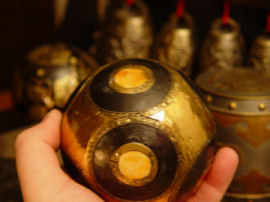
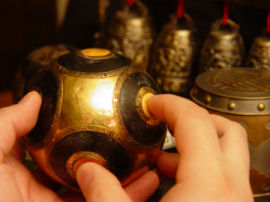
Given the time frame and nature of events, it would seem that LeMarchand was given assistance from some other source in constructing this legendary puzzle. Assistance perhaps not of this world. Whatever the truth, these accounts lend credence to the stories that The Divine Lights’ Apathy claimed its first soul on the eve of the new century.
.
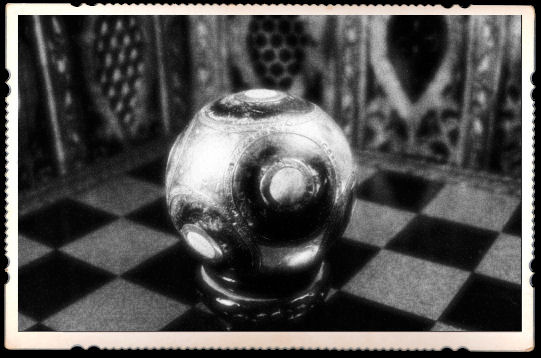
.
The name Faust’s Decision is an interesting one. It is unclear whether this was given to the piece at the time, or came later. Whilst it is true that LeMarchand would know of and may well have read Christopher Marlowe’s Doctor Faustus, there is little indication of why he would dub the puzzle after it.
What is interesting is this small
extract taken from
Klauski's book “Of
Hell”:
“…escaping
hell is thus
difficult and a rare occurrence. However, a man by the name
of
Henry
Young actually claimed he had been allowed to go free after he solved a
puzzle, which he named as “Divine Light’s
Apathy”,
without knowing the power he would unleash. He told me that
the
Cenobite it brought forth asked him if he truly wanted to explore the
path of Leviathan, and simply left when Young revealed his lack of
knowledge. He may have been mocking an old man, but if what
he
said was
true, then perhaps some of hell’s gateways have their own
unique
rules. Perhaps there lies a puzzle that will only accept
those
truly
willing to go to the limits. Nevertheless, this experience
taught
me one
thing… no man can ever know the full extent of
hell’s
design.”
-
Isadore Klauski, Of Hell,
Leviathan Press 1928.
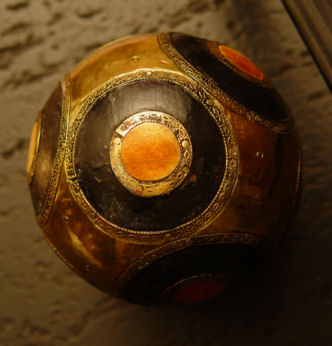
Orbs have long been used in the coronations of Kings and Queens as a symbol of state power.
Passed down from generation to generation, they affirm through symbolism the continuity and
unshakeability of supreme Leviathanic autocracy over the Earth.
Some dismiss Klauski's
work as rumour and nonsense, and others feel it a
misinterpretation of the facts. As researchers, we must try
and
stick to the facts as
much as possible. There are no known
owners of the orb, and whilst some have claimed to possess this piece,
none have yet proven it.
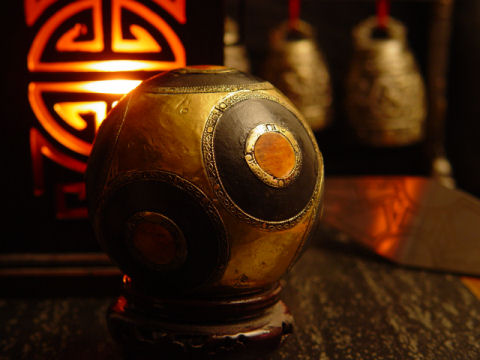
that after this life there is any pain?”
- Christopher Marlowe, Doctor Faustus.
